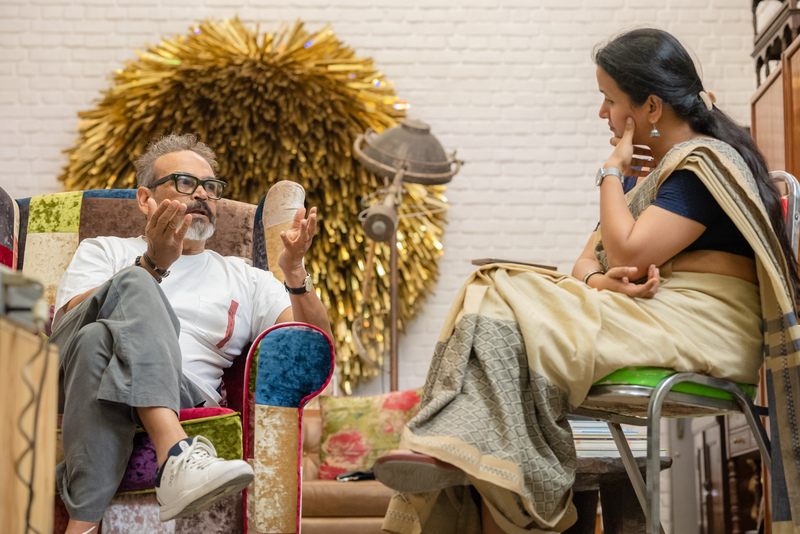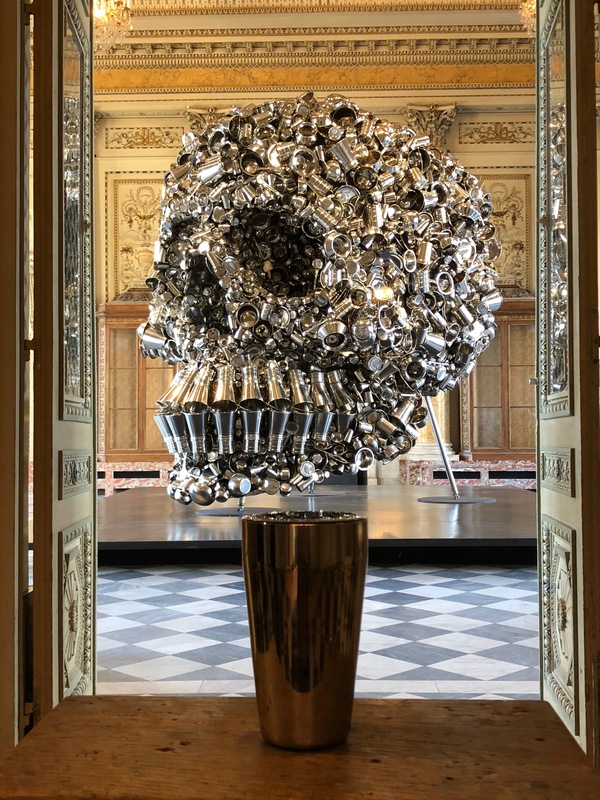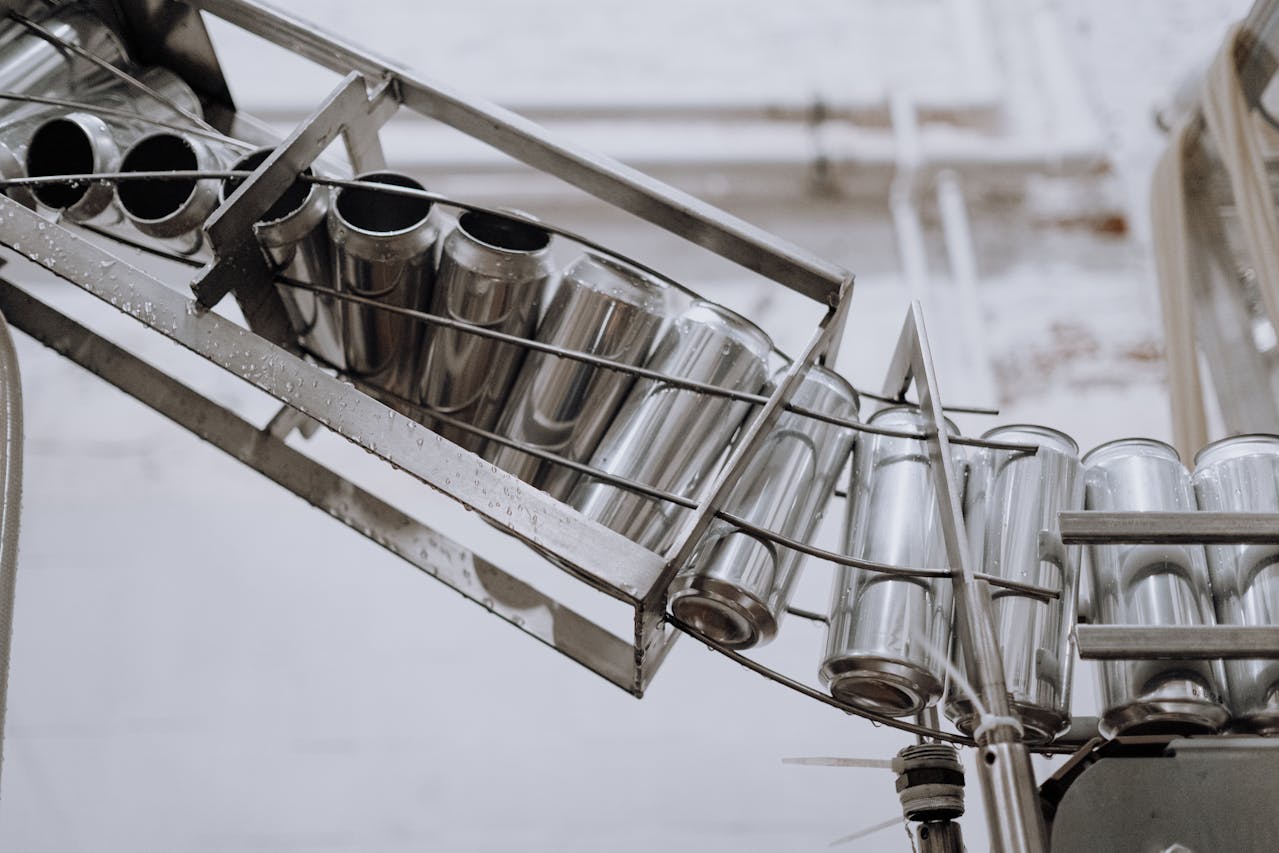Mr Subodh Gupta
August 22, 2023

Once you meet the artist Subodh Gupta, you are convinced that he is far more than just an artist. He is an experience to cherish and remember. His beady bracelet, straightforward words, zany brilliance, child-like laughter and curious big eyes peering out of stark black frames are all perfectly aligned with his thoughts on art: if it’s anything other than original, it’s not art.
Gracious enough to give the Jindal Stainless team a tour of his studio – as raw as the artist himself – Subodh Gupta is a staunch believer of art for art’s sake. His studio is cluttered with works in progress, interspersed with awe-inspiring sculptures, making it clear to the observer that he does not care for appearances – after all, he creates only for himself, not for others.
From his humble beginnings in Danapur, Bihar, he talks about his artistic journey, the importance of art and the medium of stainless steel in an unabashedly candid conversation with Sonal Singh. Let’s get a perspective on why art transcends the boundaries that people have created for themselves and how it gives us all some respite from the mundane.
What were the defining moments of your childhood that ignited your passion for art?

This is a very difficult question – difficult because even I don’t know how I became an artist. I am a child of the railways – Danapur, my birthplace, is a division of the Indian railways, and many of my immediate family members were employed in the railways. We were a happy family until my father passed away when I was 11 years old. It is actually because of Danapur and my mother’s influence that I am an artist today. Danapur may have been a small town but because of the presence of a railway colony, the British invested in building infrastructure. The town inherited that colonial influence – there were clubs with billiards tables and swimming pools.
But art was still not an active thought for me. When I moved to Patna for my BA, I didn’t go straight to an art college. Rather, I went to BN College, Patna University. I studied subjects like Hindi, psychology and history. Though I did not know that I was an artist in the making, I still realised that my passion did not lie in those subjects, and I was just unnecessarily passing my time. But during this time, I joined a theatre group and I used to make the posters for the plays that were staged by us. Many people recommended that I join an art college, so eventually I did. That’s how my story began.
From Danapur all the way to the international art world, you’ve had quite the trajectory. What were the major milestones and challenges that shaped your artistic journey?
Making art is a long journey with no fixed destination. Today’s artists work very differently. They want to reach the international art stage or they want their work to be displayed in galleries within the first two–three years of their career. They focus more on whether their work is selling or not rather than focusing on the art itself. I have been working as an artist for 35 years. It is only in the last 10–15 years that people have started recognising me. Nobody knew me in those first 15 years of my work. I did not stop creating art because I couldn’t make money from it. Fame is an incredibly long journey, and of course, it has been fraught with challenges – but these challenges don’t matter in the long run. If one has the curiosity to learn, to work, one will make it as an artist. Let me give you a general example. If you are just painting a portrait because you want to earn money from it, and not because you have any original interest in the art form, it is not art.
In college, I read a book written by Vinod Bhardwaj, in which an art critic was asked to define art. There is a couplet by Ghalib, “Na thā kuchh to ḳhudā thā, kuchh na hotā to ḳhudā hotā. Duboyā mujh ko hone ne, na hotā maiñ to kyā hotā.” The critic said, just like it takes depth to understand these two lines by Ghalib, it takes depth to understand art.
Art is time. Art also transcends time. When humans did not have language, we communicated through art – and you see this form of language etched on the walls of caves in the form of cave paintings all around the world. So you see, art precedes even language. See how powerful art is. Say there’s a sculpture. People, young and old, are looking at it. Each person looking at that piece of art weaves his or her own story around it. This just goes to show that art speaks in its own language. Everyone has their own interpretation of art, which is why you cannot teach it. Art gets planted within your subconscious like a seed – in the same way that art was seeded in me through those plays when I was a child. Also, looking at art always evokes a positive reaction – even when the theme of the art may be perceived as negative. Art will always have positive outcomes; that’s the power of art.

What drove you in those 20 years when you were struggling?
I always create only for myself. When a poet writes a poem, he does not write for others. He first writes it for himself and then recites it to others – that is what the greats like Kabir Das did as well. Everything starts with you – art is no different. The art that you make for others will never have the same impact because you are trying to play to the gallery. Art that you make for yourself has its own identity, its own strength. And if you have done an honest job with it, people tend to like it as well.
Look at Satyajit Ray movies. Why do you think they enjoy international acclaim? It’s because of his honesty in the art. Movies like Pather Panchali, which are made in a completely rural setting, and that too in the local Bangla language, are famous because they have the inherent strength of a good story.
Where do you think Indians stand in our perception and understanding of the world of art?
India has fewer people who understand and appreciate art. If we observe children around us, they can predict the storyline of movies simply because they have been exposed to a culture of seeing movies since the very beginning. Look at the number of museums in the country. It has been 76 years since we gained independence, there are so many big cities around the country and we have such a large population – there should be a museum of contemporary art everywhere. I am proud of being a Bihari because we have an excellent museum of international repute in Bihar (the Bihar Museum, Patna) designed by a Japanese architect (Fumihiko Maki), and it has no other peer in India.
Just like a waft of a cool breeze on a hot day or a spell of rain on a sweltering day brings relief to the body, art creates peace. When you go to a museum, it doesn’t matter if you understand the art or not. The museum reminds you of who you are and what your history is. There is a dearth of this kind of cultural knowledge because of which kids today do not appreciate art. Art is very important. Take your kids to museums. Take them once a month; take them once a year, if you may! You will notice… one of those sculptures or paintings will invade their subconscious and they will remember it for life. The child may not even mention that to you, may even fight with you for going to places other than museums, but the child will carry permanent impressions for sure.
In countries like America or France, even if you speak to a carpenter or a taxi driver, he will be able to tell you the names of at least ten artists. This is because they take their children to museums right from childhood.
For Indians, the best example of visual art is found in the ever-present calendar – with images of gods of every religion. We have also seen temples and mandaps (canopies) for marriage etc., which are forms of decorative arts.
In my experience, whenever someone thinks of your artwork, your stainless steel banyan tree sculpture is one of the pieces that they remember…
It’s heartening to see that my work has been displayed at the museum (National Gallery of Modern Art, Delhi). One can see it easily from outside. That project was a very big break for me.

Source: Eatcha – Own work, CC BY-SA 4.0, https://commons.wikimedia.org/w/index.php?curid=77645009
You spoke about stainless steel earlier. So let me say something about the metal. In the mid-80s, bronze utensils used to rule the roost in common households. It was during this time, that stainless steel utensils started trickling into people’s houses. When you used to see those shiny utensils in your neighbour’s house, you’d think that their stature and status were better than yours. Slowly, the material gained such a widespread audience that, by the 90s, every house had stainless steel utensils – and this fact cuts across all strata of society, rich or poor. Even today, the beggar asking for change on the street carries around a stainless steel bowl. Stainless steel is ubiquitous.
On a personal note, since my childhood, I have thoroughly enjoyed cooking, so much so that if I wasn’t an artist, I’d be a cook. I cook very well – or at least I think so! Because I have been cooking since childhood, I have been around stainless steel utensils a lot. At first, it was just about cooking for other people, but then I started including stainless steel in my art as well – in order to connect my love of food with art.
I work out of a studio today but in the early years of my career, I used to work out of my house. One day, I was standing alone in the kitchen. Beams of sunlight were streaming in through the window, glinting off the utensils, and landing on the floor. This instantaneously caught my eye – almost like the utensils were talking to me. So I took all the utensils out of the stand and piled them in the middle of my dining room. I decided then that I would want to work with this medium. That is how my journey with stainless steel utensils began, and look where I am with those very stainless steel utensils today.

How did you move from paintings to sculptures?
It was a wish. Any work you do has a story to tell in its own way – if it has an impact, people will look at it. I wanted to make a sculpture and I considered what materials to use; I don’t know much about handicrafts. But I believe art is truly in the eyes of the beholder. Why did stainless steel utensils become my medium of choice? It’s because I look at them from a different perspective. If a utensil is inside a kitchen, it is not art. But if the same utensil is in a museum, then it becomes art. It’s because the setting of the item alters your perception of it. The onlooker starts imagining sculptures the way the sculptor did in the first place. That is all there is; there’s no other magic.
I use multimedia for my art. Stainless steel is a material. So is aluminium. So is gobar (cow dung). Look at the importance of gobar in Indian culture. It is important in traditions. It is used as an antiseptic in rural households. Its cakes are used as fuel to cook food by people of all religions. Gobar has multiple uses across all cultures across Asia; it’s a meeting point for all religions.
I create with many materials, they are just my medium.
Out of the installations you have created, what are your personal favourites?
Though all my works are like my babies, the piece called Very Hungry God, a skull made of stainless steel items, is very close to my heart.

Source: Prateek Gupta – https://www.flickr.com/photos/190518809@N02/50432055237/, CC0, https://commons.wikimedia.org/w/index.php?curid=94839293

Could you tell us a little about your association with the Jindal Stainless family?
It is a very old association. I respect Deepika ji and Ratan ji very much. 20 years ago, both of them took me to Hisar. There, in front of Ratan ji’s office, I created a small art piece with stainless steel utensils. That was how it started and the relationship continues today even after 20 years.






